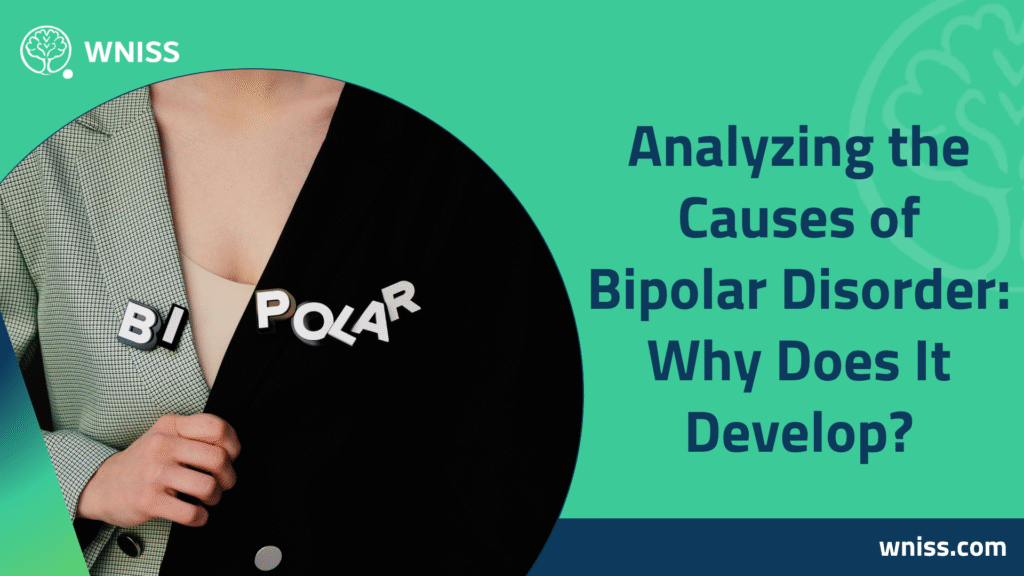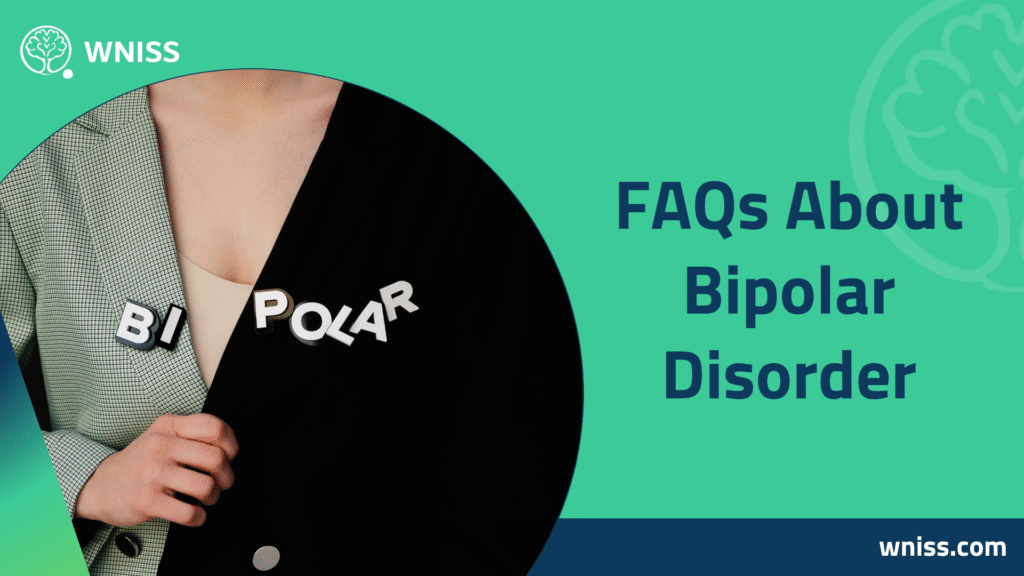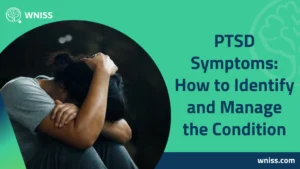When discussing what is bipolar disorder, it is crucial to understand that this condition is far more than simple mood swings or ordinary emotional fluctuations that every person experiences from time to time. In medical terms, bipolar disorder is a serious mental health condition characterized by extreme mood episodes, shifting between periods of elevated energy known as mania or hypomania, and episodes of deep depression. These alternating emotional states profoundly affect not only a person’s thoughts and emotions but also their physical energy, behavior, and ability to function in day-to-day life. Unlike typical mood changes that people might encounter due to situational factors like stress or exhaustion, bipolar disorder symptoms are persistent, disruptive, and often lead to severe impairments if left unmanaged.
While many people assume that manic episodes involve only happiness or excitement, the reality is far more complicated. Individuals experiencing acute mania bipolar disorder, for example, may display hyperactivity, sleeplessness, racing thoughts, impulsive behaviors, and even psychotic symptoms such as delusions or hallucinations. On the other hand, depressive episodes often plunge patients into overwhelming sadness, loss of interest in pleasurable activities, and even suicidal ideation. The most challenging aspect of understanding what is bipolar disorder lies in recognizing how these two extremes can coexist within the same individual, sometimes even occurring simultaneously in a mixed episode.
Moreover, the social and psychological consequences of this condition are profound. People suffering from bipolar disorder often find it difficult to maintain employment, relationships, and educational pursuits, simply because their mood shifts interfere with cognitive function and emotional stability. Even between episodes, many continue to experience residual symptoms such as irritability, anxiety, and cognitive fog, making early diagnosis and long-term management absolutely critical.
Therefore, truly understanding what is bipolar disorder requires more than surface-level knowledge. It involves delving deep into the biological mechanisms, behavioral patterns, diagnostic procedures, and treatment approaches that together define this intricate psychiatric disorder.
Analyzing the Causes of Bipolar Disorder: Why Does It Develop?
After comprehending what is bipolar disorder, it becomes equally vital to examine the causes of bipolar disorder, as understanding these origins can help demystify why some individuals develop the condition while others do not. Scientifically speaking, the causes of bipolar disorder are multifactorial, meaning that no single factor alone is responsible for its onset. Instead, this mental illness results from the complex interplay of genetic, neurobiological, environmental, and psychological elements, each contributing to varying degrees in different patients.

To begin with, research consistently shows that genetics play a significant role. People who have a first-degree relative, such as a parent or sibling, with bipolar disorder, are at a substantially higher risk of developing the condition themselves. However, having a genetic predisposition does not guarantee that an individual will inevitably experience symptoms of bipolar disorder. This observation suggests that environmental and lifestyle factors are also deeply influential.
Biochemically, irregularities in neurotransmitters such as dopamine, serotonin, and norepinephrine are believed to underpin many of the characteristic bipolar disorder symptoms. These chemical messengers are critical in regulating mood, energy levels, and emotional responses. When their activity is disrupted, mood regulation becomes unstable, leading to manic or depressive episodes.
Additionally, neuroimaging studies reveal structural and functional abnormalities in the brains of individuals with bipolar disorder, particularly in regions related to emotion processing and executive functioning. Though the precise implications of these findings are still under investigation, they further highlight that bipolar disorder is not merely a psychological condition but also a physical brain disorder.
Environmental stressors are also recognized as triggering factors. Life events such as trauma, loss of a loved one, or even chronic stress can activate the onset of bipolar disorder in genetically susceptible individuals. Substance abuse, including drugs like cocaine or alcohol, may exacerbate symptoms or even precipitate manic or depressive episodes. Overall, while the precise causes of bipolar disorder remain partially elusive, it is clear that biological vulnerability combined with external triggers sets the stage for the emergence of this life-altering condition.
Exploring Types of Bipolar Disorder: Distinctions and Clinical Implications
To grasp the full complexity of what is bipolar disorder, it is essential to examine the recognized types of bipolar disorder, each presenting with distinct clinical features and requiring individualized treatment approaches. The primary types of bipolar disorder include:
- Bipolar I Disorder: Characterized by at least one manic episode, which may or may not be followed by a depressive episode. Individuals with bipolar I disorder often experience severe acute mania bipolar disorder episodes, sometimes requiring hospitalization. These manic phases can last at least seven days or be so severe that immediate intervention is necessary.
- Bipolar II Disorder: Marked by at least one major depressive episode and one hypomanic episode. Unlike mania, hypomania is less intense and typically does not require hospitalization, yet it still significantly impacts mood and energy levels. People with bipolar II disorder are frequently misdiagnosed as having unipolar depression due to the subtlety of their hypomanic symptoms.
- Cyclothymic Disorder: Defined by periods of hypomanic symptoms alternating with depressive symptoms that do not meet the full diagnostic criteria for a hypomanic episode or major depressive episode. Despite being less severe, cyclothymia is a chronic mood disorder requiring professional management.
- Other Specified and Unspecified Bipolar and Related Disorders: This category encompasses atypical presentations of bipolar disorder that do not fit neatly into the above classifications yet still involve significant mood instability.
Understanding the distinctions between these types of bipolar disorder is crucial for developing an appropriate treatment strategy, as the choice of medications and therapeutic interventions often depends on the specific type diagnosed.
Recognizing Symptoms of Bipolar Disorder: Mood Episodes Unveiled
When discussing what is bipolar disorder, understanding the symptoms of bipolar disorder becomes a cornerstone of accurate identification and treatment. These symptoms manifest in two primary forms: manic/hypomanic episodes and depressive episodes, each bringing distinct challenges.

During a manic episode, or in the case of acute mania bipolar disorder, individuals may experience:
- Elevated or irritable mood lasting at least one week.
- Inflated self-esteem or grandiosity.
- Reduced need for sleep.
- Increased talkativeness or pressured speech.
- Racing thoughts and distractibility.
- Engaging in risky behaviors, such as impulsive spending, reckless driving, or unprotected sex.
In depressive episodes, common symptoms of bipolar disorder include:
- Persistent feelings of sadness, emptiness, or hopelessness.
- Loss of interest in almost all activities.
- Changes in appetite and weight.
- Fatigue or energy loss nearly every day.
- Feelings of worthlessness or inappropriate guilt.
- Diminished concentration and indecisiveness.
- Recurrent thoughts of death or suicidal ideation.
The alternation between these two poles often confuses both patients and clinicians, complicating the diagnostic process and leading to significant delays in appropriate care.
The Role of a Bipolar Disorder Test: Evaluating and Diagnosing Effectively
Accurate diagnosis is essential for initiating effective treatment, and thus, understanding the purpose and process of a bipolar disorder test is paramount. Unlike some medical conditions that can be diagnosed through blood tests or imaging scans, bipolar disorder requires a comprehensive clinical evaluation.
Typically, a bipolar disorder test involves:
- Thorough psychiatric interviews assessing mood history and behavioral patterns.
- Standardized questionnaires such as the Mood Disorder Questionnaire (MDQ) to screen for hypomanic and depressive symptoms.
- Reviewing personal and family medical history to identify genetic risk factors.
- Monitoring symptom patterns over time to distinguish between mood episodes.
Because bipolar disorder often presents initially as depression, utilizing a structured bipolar disorder test allows clinicians to uncover hypomanic episodes that patients may not recognize as pathological, preventing misdiagnosis and ensuring more accurate treatment planning.
Approaching Bipolar Disorder Treatment: Strategies for Long-Term Stability
Effective bipolar disorder treatment focuses on managing both manic and depressive symptoms while preventing relapse and promoting long-term stability. Treatment usually involves a combination of medication, psychotherapy, and lifestyle modifications.
The standard components of bipolar disorder treatment include:
- Mood Stabilizers: Medications such as lithium remain the gold standard, helping to regulate mood swings.
- Antipsychotic Medications: Often prescribed during acute manic phases to control psychotic symptoms.
- Antidepressants: Used cautiously to avoid triggering mania.
- Cognitive Behavioral Therapy (CBT): Helps patients understand and manage distorted thinking patterns.
- Psychoeducation: Teaching patients and families about the nature of the disorder improves treatment adherence and crisis management.
- Regular Monitoring: Frequent check-ups with a psychiatrist to adjust medications and monitor mood changes.
Successful bipolar disorder treatment is not just about medication but involves building a comprehensive support system that addresses the emotional, cognitive, and social challenges associated with this chronic condition.
FAQs About Bipolar Disorder

What is it like being bipolar?
Living with bipolar disorder often feels like navigating an emotional rollercoaster. Individuals cycle between episodes of high energy, excitement, and overconfidence during manic phases and periods of deep sadness and hopelessness during depressive episodes. These shifts can disrupt relationships, work, and daily routines.
What are 5 signs of bipolar disorder?
The five most common symptoms of bipolar disorder include:
- Unpredictable mood swings.
- Periods of extreme energy or restlessness.
- Decreased need for sleep without feeling tired.
- Persistent sadness and loss of interest in activities.
- Impulsive and risky behaviors.
Do you cry a lot with bipolar?
Yes, during depressive episodes of bipolar disorder, excessive crying and feelings of sadness are common. Emotional regulation becomes difficult, often leading to crying spells without apparent reason.
How does a bipolar person act?
A person with bipolar disorder may exhibit periods of excessive happiness or irritability, engage in risky behaviors, speak rapidly, and show racing thoughts during manic phases. During depressive periods, they may withdraw socially, feel hopeless, and struggle with daily tasks.
Can bipolar go away?
Bipolar disorder is considered a lifelong condition, but with appropriate bipolar disorder treatment, many individuals achieve symptom management and long-term stability. While it does not “go away,” its impact can be minimized through consistent care.
Do people with bipolar feel love?
Absolutely. People with bipolar disorder experience love deeply and intensely. However, mood instability can sometimes complicate romantic relationships, making open communication and mutual understanding vital for emotional connection.
ConclusionIn conclusion, understanding what is bipolar disorder requires a thorough exploration of its diagnostic complexities, biological underpinnings, varied types of bipolar disorder, fluctuating symptoms of bipolar disorder, and the significant role played by both environmental triggers and genetic factors. Through structured diagnostic tools like a bipolar disorder test and comprehensive bipolar disorder treatment strategies, patients can achieve long-term stability despite the chronic nature of their condition. Whether one faces acute mania bipolar disorder, depressive episodes, or a combination of both, recognizing the condition early and pursuing consistent treatment dramatically improves the potential for leading a stable, fulfilling life. By raising awareness and deepening understanding, individuals affected by bipolar disorder can find hope, support, and empowerment throughout their journey toward recovery.




